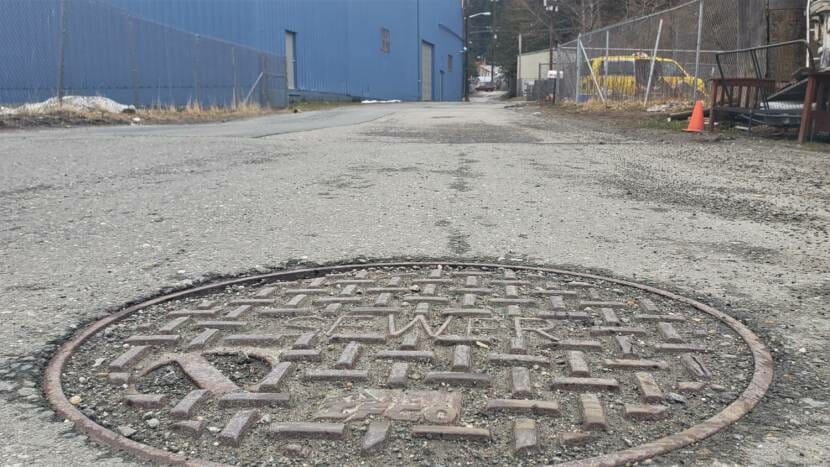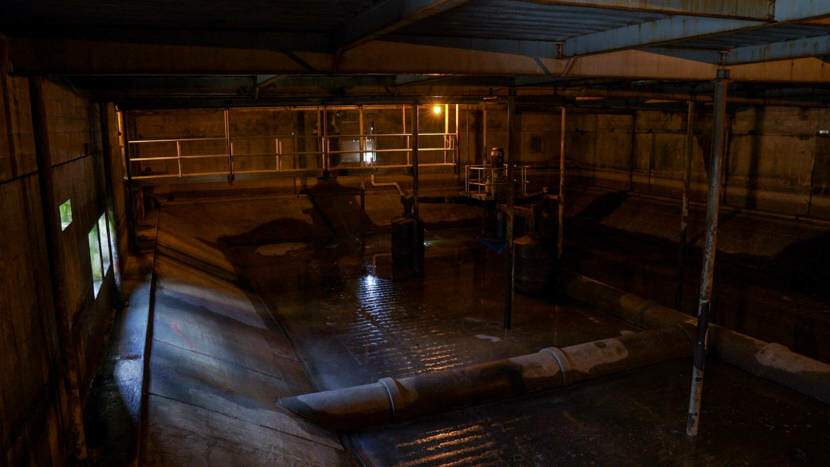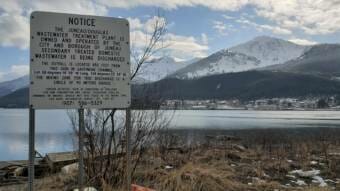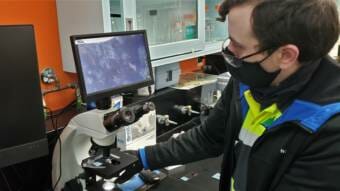
Think about everything you put down the drain. You probably know better than to dump used motor oil. But, what about bacon drippings? “Flushable” wipes?
Nope.
City officials say teaching everyone in Juneau what’s OK or not is part of the path to running cleaner sewage treatment plants. That includes industrial waste, household chemicals, and fats, oils and greases.
And stopping this practice: “I’m sure I’m like everyone else who has a garbage disposal, and I use that instead of composting, ‘cause I’m not a gardener,” said Juneau Assembly member Loren Jones, on a tangent during a meeting in February.
Juneau’s treatment plants have a tendency to get overloaded with organic matter, like food scraps, so in-sink garbage disposals aren’t great.
Over the next several years, the City and Borough of Juneau has a lot of promises to keep with environmental regulators after racking up dozens of pollution violations at its two main sewage treatment plants.
Coming up with strategies to control the sources of problematic waste is one of many promises, big and small, that the city made in a new agreement with state regulators. Other promises have to do with the sewage treatment process itself. They’re part of the process for the city to get its two main wastewater treatment plants into compliance with the Clean Water Act.
The Clean Water Act is a landmark federal law passed in 1972. Lawmakers got motivated to adopt the sweeping legislation after a very polluted Cuyahoga River in Ohio caught on fire.
“When we see that there are effluent violations, we lose sight of the incredible success story that the Clean Water Act actually has been,” said Michelle Hale.
Hale has about 30 years of professional experience on water quality issues, including as the former director the Alaska Department of Environmental Conservation’s Division of Water Quality — the regulators.
“If you reviewed discharge data from across the state, and really across the nation, you would find most dischargers end up violating permit limits at some point in time,” Hale said.
Hale is also a member of the Juneau Assembly. She said the city’s violations should be taken very seriously, but they’re also by design. As discharge permits are renewed every few years, the Clean Water Act gradually tightens pollution standards. The process the city is working through now is part of a feedback loop for cleaner and cleaner water.
“So it’s actually not a surprise when there’s a discharge violation,” she said.
In a memo to members of the Juneau Assembly, City Manager Rorie Watt hit on some big picture issues with the utility. He said the wastewater utility’s “culture of accommodation” was the root cause of violations stacking up. He ticked off some specific examples: refusing in the past to raise utility rates for over a decade, accepting wastewater from cruise ships when capacity was limited, and a need for a “sterner more proactive approach” to control what people put down the drain.
“It’s a balance between, you know, wanting to provide services to our constituents and businesses and being sure that we know our limits,” Watt said.
In a practical sense, wastewater treatment facility operators in Juneau aren’t sure what some of those limits are. They know how big their treatment basins are, of course, and how to handle a range of normal sewage. But what works well on one batch might not on the next because of abnormal, harder-to-treat surges of wastewater from industrial users, cruise ships and unknowns in the waste stream.
The city has a study due next year to look at its options, and a lot of questions to answer: What are the peak amounts of nastier sewage the plants can handle? Can new meters and instrumentation throughout the system help plant operators know and prepare to treat what’s coming their way? Who are the industrial users, and what are they dumping down the drains? Do they need more oversight? Would upgrading treatment systems or expanding the city’s plants be worthwhile?
They’ll also look into one of two huge aeration basins at the Juneau-Douglas Wastewater Treatment Plant. If cruise ships were in town, a big paddle would be churning and gurgling through a lot of brown water to promote the growth of microbes that eat sewage. But when the flow is low, it’s drained and goes offline. Since the valley has its own plant that’s periodically overloaded, maybe it makes sense for the Mendenhall Valley to divert some of its sewage downtown.

Eventually, all of that study data will come in and the city will have to make some decisions.
Guy Archibald is the staff scientist at the Southeast Alaska Conservation Council and a wastewater expert. He thinks for-profit industries should bear more of the cost. He used to work in Tacoma, Washington, where wastewater rates better reflect users’ impact.
“The nastier stuff they were sending to the wastewater treatment plant, the more they charged the industrial users of that service,” Archibald said.
In Juneau, that already happens with the cruise industry, but not other commercial users.
Geoff Larson is the co-founder of one of the city’s biggest wastewater customers, the Alaskan Brewing Company. He’s also been on the city’s Utility Advisory Board since it formed in 2003. Larson said coming up with different rates that account for the true cost of different users’ sewer service would be pretty complicated, especially with Juneau’s unusual geography.
“Do we charge the person at the end of the road for all the pipe and lift stations that they should be paying for? And the person who’s next to the wastewater treatment plant shouldn’t pay any of that because he’s just going right to the plant?” he said.
It’s too early for policy calls like that. But Archibald said there are some things the average person can do that will help.
“Are you willing to recycle, you know, compost your organic material, use more friendly cleaning products and toilet products? Or, are you gonna pay more on your monthly bill to the CBJ?”
One way or another, someone’s got to pay for what we flush.
This is the last story, for now, in our deep dive into Juneau’s sewage issues. You can catch up on earlier stories here.


